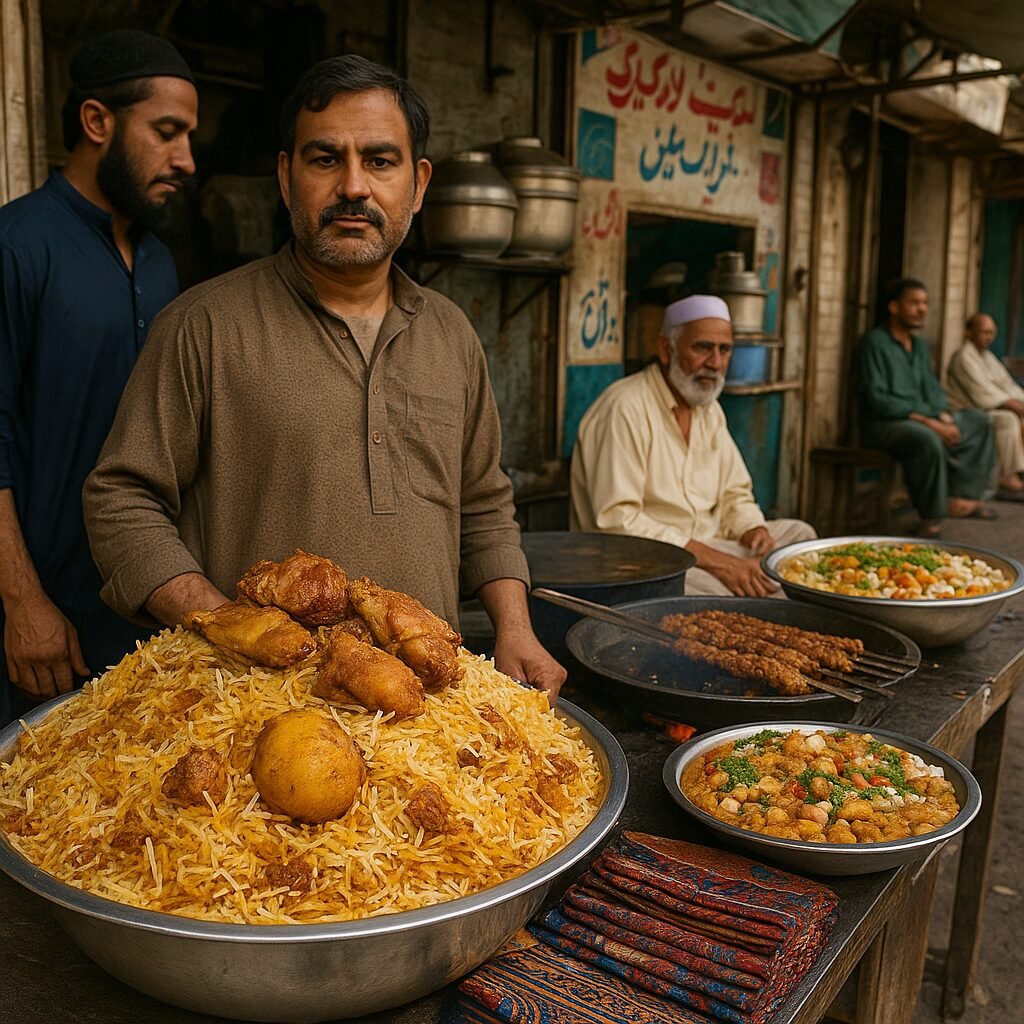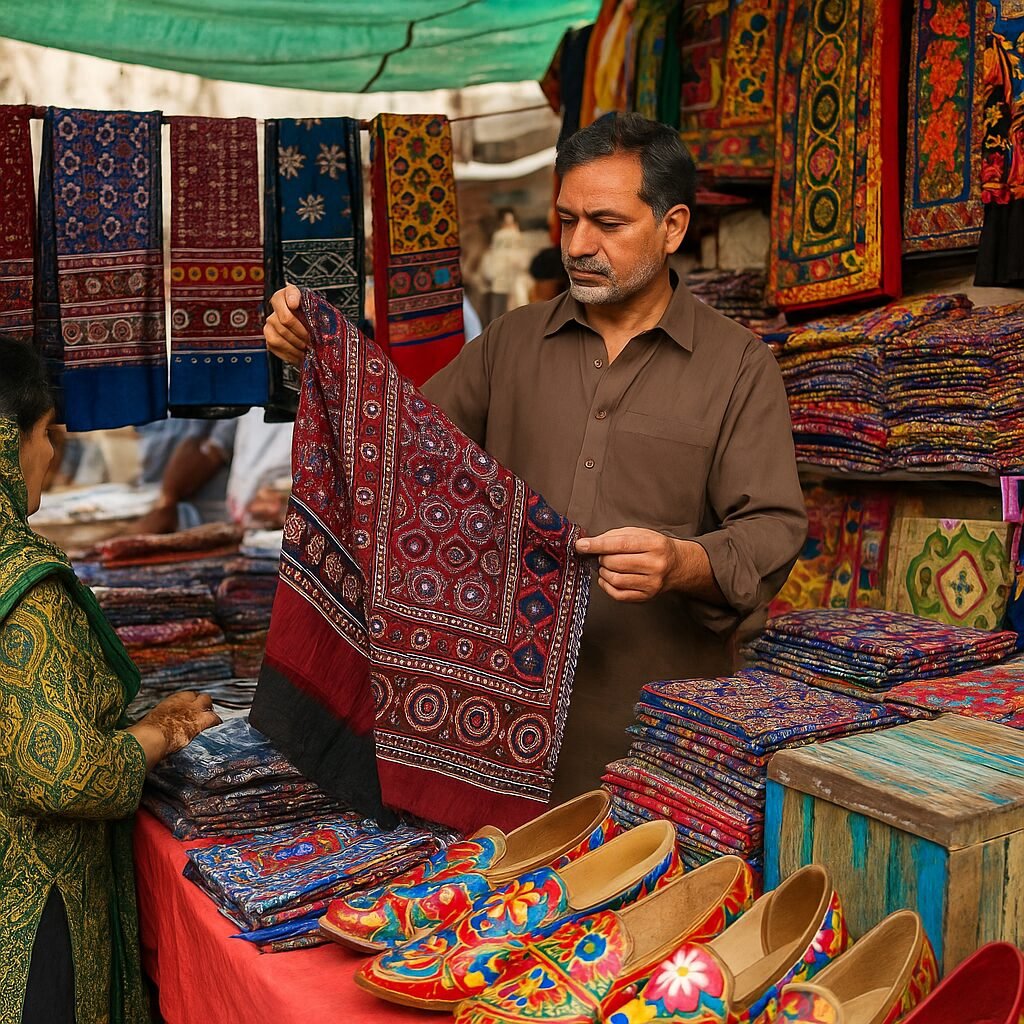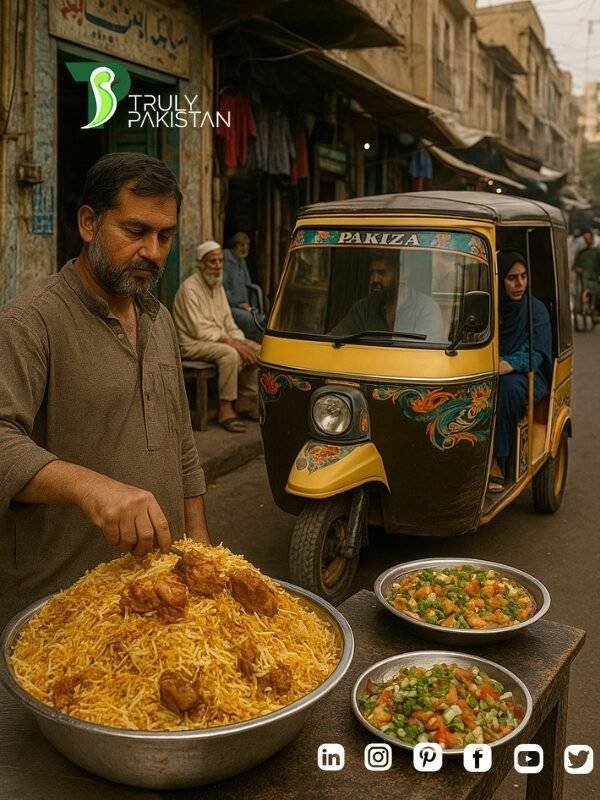A City Beyond the Headlines
Karachi is a name that often triggers strong reactions. For some, it conjures images of overcrowded roads, political chaos, or breaking news alerts. For others, it’s a city they’ve only heard of in headlines—rarely flattering, almost always incomplete. But for those who call it home, or have wandered its winding streets with open eyes and an open heart, Karachi is something entirely different. It’s layered, defiant, deeply human.
To explore Karachi like a local is to unlearn the clichés and meet the city on its own terms. It means tuning into its rhythm, not resisting its rush. It’s waking up to the call of the fruit seller outside your window, grabbing a plate of biryani that burns and comforts at the same time, and sipping late-night chai while the city talks politics under fairy lights. It’s not a curated experience—it’s raw, real, and unforgettable.
This isn’t a city that tries to impress you. It doesn’t polish its edges for tourists. But if you’re willing to look past the surface, Karachi will show you a side few outsiders ever see—a place where contradiction is the norm, chaos coexists with kindness, and life pulses through every street with unfiltered intensity.
In this blog, we’ll explore what it truly means to explore Karachi like a local—not just the where and what, but the why. Because this city is more than a destination. It’s a story that’s still being written.
Getting Around: Embracing the Chaos
To explore Karachi like a local, you must first surrender to its chaos—especially when it comes to getting around. There’s no neat subway map, no perfectly timed trams. But what Karachi lacks in structure, it makes up for in color, character, and unpredictability.
For short distances, nothing beats the iconic rickshaw ride. It’s noisy, often bumpy, and completely unfiltered—yet there’s something liberating about weaving through traffic with the wind in your hair and the city unfolding before you like a film in fast-forward. There’s no better way to be at street level, eye-to-eye with the city.
Then there are the truck art buses, rolling canvases of poetry, political slogans, and mythical creatures. While these buses may not run on tight schedules, they offer something rarer—a front-row seat to Karachi’s soul. Every brushstroke on their flamboyant frames reflects a deeper cultural narrative. You’re not just catching a ride, you’re participating in mobile folklore.
For practicality, ride-hailing apps like inDrive or Yango are widely used by locals. Affordable and fast, they’re your best bet for longer routes or when you’re running late. But don’t let convenience rob you of experience. Walk where you can. Sit beside locals in shared buses. Stand by the road and observe the choreography of it all.
Because to truly understand Karachi, you can’t stay behind a car window. You have to ride it, dodge it, feel it. That’s where the story lives.
Food as Identity: More Than Just Biryani


If there’s one thing that unites Karachiites across class, ethnicity, and politics, it’s food. But don’t mistake it for just sustenance—here, food is identity, ritual, and social glue. To explore Karachi like a local is to understand that mealtimes are moments of connection, not routine.
Start with biryani, of course. It’s more than a dish—it’s a debate, a legacy, a Friday tradition. The layers of saffron rice, marinated meat, and tender potatoes (if you’re team aloo) are a symbol of the city’s diverse roots. But even more fascinating than the taste is the pride each local has in their favorite biryani spot. Ask around, and you’ll be told a dozen “best” places—each one defended like a sacred truth.
But Karachi’s culinary heartbeat doesn’t end with biryani. It pulses through the sizzling grills of Burns Road, where seekh kebabs drip with flavor and the scent of spices hangs heavy in the air. It simmers in the chaat stalls of Hussainabad, where the tang of tamarind and crunch of papri hits just right. And it comes alive at midnight dhabas, where tea kettles clatter, parathas fry on open flames, and politics is debated until sunrise.
These places are where the city gathers. They’re not polished or pre-plated, but that’s exactly why they matter. Eating here isn’t about ambiance—it’s about atmosphere. You share space, stories, and sometimes, even a spoon.
If you want to experience Karachi’s truth, don’t just taste its food. Sit with it. Linger. Listen. It’ll tell you everything you need to know.
Sights of the Soul: Where the City Breathes
Karachi isn’t one of those cities that flaunts postcard-perfect landmarks. Its beauty is not in symmetry or spectacle, but in the texture of daily life, in places that feel lived-in, layered, and full of stories. To explore Karachi like a local means to visit its landmarks not for Instagram shots, but for the silence, the sounds, the soul they hold.
Take Frere Hall, for instance. Built during the British colonial era, it now hosts a quiet book bazaar under centuries-old banyan trees. The walls inside are adorned with Sadequain’s murals—chaotic and brilliant, much like the city itself. Locals don’t come here to admire architecture; they come to breathe, to reflect, to remember that Karachi still makes space for stillness.
Then there’s Empress Market—loud, bustling, unapologetic. This isn’t your average tourist market. It’s a living, breathing organism where spices, fabrics, fruits, and conversations compete for space. There’s no curated layout, no friendly map. But if you walk its corridors with curiosity, you’ll find everything from dried lemons to vintage teacups, and a portrait of Karachi that’s as raw as it gets.
Mohatta Palace, with its Indo-Saracenic elegance, VM Art Gallery, Canvas Gallery, and the ever-active Arts Council are cultural anchors in a city that thrives on expression. They host plays, exhibitions, and festivals—not to entertain tourists, but to nurture the city’s own creative pulse.
And then there’s the coast—Clifton Beach, Seaview, and the eateries at Do Darya. While the beach might not be pristine, it’s democratic. Everyone comes here—from kids flying kites to couples walking barefoot in the tide. You’ll find horse rides, corn vendors, and waves that carry secrets of a city that never truly sleeps.
Karachi’s sights don’t dazzle in the usual sense. But they stay with you—etched in memory not because of how they looked, but how they felt.
Shopping Without the Gloss: Local Threads & Art


Forget air-conditioned malls and branded storefronts. If you really want to explore Karachi like a local, step into its open-air markets, roadside stalls, and hidden design studios—where shopping is less about transactions and more about discovery.
Start with Zainab Market and Bohri Bazaar, where the chaos is intoxicating and the colors overwhelming. Here, bargaining isn’t just allowed—it’s expected. You’ll find everything from hand-embroidered shawls and block-printed kurtas to vintage coins and secondhand books. It’s messy, loud, and endlessly fascinating. And that’s the point.
But Karachi isn’t stuck in the past. In between the traditional bazaars, you’ll find young designers blending heritage with innovation. Think Ajrak scarves reimagined as modern wraps, or kohlapuri chappals hand-painted with truck art motifs. These aren’t just souvenirs—they’re wearable narratives, echoing Sindhi, Balochi, and urban identities all at once.
Even local street vendors have a kind of artistry. The intricate henna patterns drawn in seconds, the truck art painters who turn dull metal into mobile masterpieces, and the calligraphy artists on sidewalks—they’re all storytellers in their own right. Supporting them isn’t charity. It’s participation in a larger cultural ecosystem.
Karachi’s shopping culture doesn’t offer polished luxury. It offers something far more valuable—connection. Behind every product is a person, a family, a tradition. And when you shop local here, you’re not just buying something. You’re acknowledging that story.
Escaping Without Leaving
Even Karachiites, hardened by the city’s pace and noise, need to disconnect. But unlike other metropolises where an escape means catching a flight, Karachi offers its own kind of retreat—often just a short drive away, yet wildly different in energy. To explore Karachi like a local means knowing where to go when the city overwhelms you.
Take Mubarak Village for example—a quiet fishing hamlet just beyond the city’s edge. There are no resorts, no curated experiences, just unspoiled shoreline, boats bobbing in the sea, and a rhythm of life so slow it feels like another century. Locals head there not for luxury, but for stillness, and maybe a seafood meal cooked by the waves.
If you’re feeling adventurous, book a trip to Charna Island. It’s one of the few places near Karachi where the water turns turquoise and coral reefs wait beneath the surface. You’ll need a boat, some gear, and a spirit for exploration—but the reward is absolute peace, far from the urban buzz.
Then there’s Turtle Beach, a more accessible getaway known for its rugged charm and rental huts. Friends gather here for midnight barbecues, early morning swims, and impromptu music sessions under the stars. There’s sand in your shoes, smoke in the air, and no WiFi to interrupt it. That, in Karachi, is luxury.
These escapes matter. They remind you that Karachi isn’t just a sprawl of cement and sirens—it’s also sea, sky, and silence when you need it most. And the locals? They’ve mastered the art of balancing both.
The Karachi Spirit: Unfiltered Generosity
Cities often earn their reputation through architecture, economy, or history. But Karachi? It earns its soul through its people. To explore Karachi like a local is to witness a kind of everyday kindness that doesn’t seek attention—it just happens, quietly and without ceremony.
You’ll find it when your rickshaw breaks down and three strangers appear to help push it off the road. You’ll find it when someone insists you take the last piece of naan even though they haven’t eaten yet. You’ll feel it when the chai wala refuses to take your money because “you’re a guest here.” Karachi’s generosity isn’t packaged. It’s instinct.
This is a city where people carry hard lives with humor, where resilience is stitched into the fabric of daily survival. And in that struggle, there’s compassion. Neighbors check in on each other. Entire communities come together to arrange weddings, support a grieving family, or offer Iftar to anyone passing by during Ramzan.
There’s also an unspoken etiquette—a lived understanding that things work because people make them work. Someone will hold your place in line, help you cross a chaotic road, or offer unsolicited advice that, more often than not, turns out to be golden.
What outsiders often see as disorder is, in truth, a deeply functional form of communal living. It’s not polished, but it is profoundly human.
To know Karachi is to witness these small, spontaneous acts of grace that happen every single day. And once you do, it’s impossible not to fall a little bit in love.
Navigating With Respect
Every city has its unspoken rules, and Karachi is no different. But here, those rules aren’t rigid—they’re built on mutual understanding, cultural sensitivity, and shared space. If you want to explore Karachi like a local, respect isn’t optional—it’s your passport.
First and foremost, cash is king. While the city is catching up on digital payments, most street vendors, rickshaw drivers, and local eateries still prefer cash. Carry small bills—offering a large note for a PKR 100 chai bill can sometimes get you a frown or a gentle lecture.
Dress modestly, especially in older neighborhoods or near religious sites. Karachi’s fashion scene is diverse and expressive, but locals know when to blend in. A loose shalwar kameez isn’t just comfortable—it often earns you smiles and smoother interactions.
When visiting mosques or shrines, remove your shoes, lower your voice, and observe before participating. These spaces carry emotional and spiritual weight for many, and entering them respectfully deepens your connection to the city.
Also, don’t mistake Karachi’s informality for carelessness. There’s a rhythm to how things are done here. Lines are real, even if they aren’t straight. Conversations matter more than credentials. And helping someone without being asked is considered basic decency.
And finally—listen more than you speak. Karachiites love to share stories, advice, and jokes. They’ll open up if you show genuine curiosity, not just a tourist’s gaze. Approach the city not with assumptions, but with humility. That’s when doors—and hearts—start to open.
Also See: Why Tourism in Pakistan: The Next Tourism Frontier
To Truly Know Karachi, Blend In
Karachi is not a city you simply visit. It’s a city you negotiate with, adapt to, and—eventually—become part of. It doesn’t cater to expectations, and it certainly doesn’t slow down for anyone. But if you learn to move with it instead of against it, you’ll discover something rare: a metropolis that’s alive in ways most cities have forgotten how to be.
To explore Karachi like a local is to embrace contradiction. It’s where worn-out buses carry dreams. Where tea stalls host intellectual debates. Where the scent of street food dances with the sea breeze, and where chaos and calm exist just blocks apart. You don’t need a curated itinerary—you need time, presence, and an openness to see beyond the surface.
Don’t just walk through Karachi. Pause in it. Ask questions. Sit on a roadside bench. Share a cup of chai. Watch people, talk to them, and let the city unfold slowly. Because the beauty of Karachi isn’t found in a monument or a brochure. It’s in the stories told over food, the generosity extended to strangers, the resilience in every face.
And once you see Karachi through those eyes—not as a challenge, but as a conversation—you’ll carry it with you long after you’ve left. Not as a destination, but as an experience that changed the way you travel, and maybe, the way you listen.
References
-
Business Recorder. (2024, July 12). Karachi like a local: where to eat, shop, and soak in the city’s soul. https://www.brecorder.com/news/40372444
-
Dawn News. (2023, September 21). Biryani wars: A Karachi obsession. https://www.dawn.com/news/1664013
-
Pakistan Tourism Development Corporation (PTDC). (2023). Karachi – A city of culture, coastline, and contrasts. https://www.tourism.gov.pk
-
BBC Travel. (2022, November 10). Pakistan’s chaotic charm: The food streets of Karachi. https://www.bbc.com/travel/article/20221110-karachis-food-scene
-
The Express Tribune. (2023, May 4). Frere Hall – Karachi’s forgotten colonial-era gem finds new life. https://tribune.com.pk/story/2413495/frere-hall
-
Lonely Planet. (2023). Top things to do in Karachi. https://www.lonelyplanet.com/pakistan/sindh/karachi
-
Karachi Metropolitan Corporation (KMC). (2022). Historic sites and art districts of Karachi. https://kmc.gos.pk

